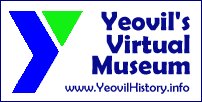unitarian chapel
unitarian chapel
Quedam Street / Vicarage Street
Vicarage Street was formerly known as Quedam Street or Quidham Street although the name Quedam Street fell into disuse and the name Vicarage Street became firmly established during the nineteenth century and was named as such from the 1841 census onwards. In 1856 Vickery referred to "Quedam-street (now Vicarage Street)".
In medieval times the Chantry of the Blessed Virgin Mary Without the Church was supposedly built in Vicarage Street although since the chantry was actually attached to the church it is more likely that this was simply a property owned by the chantry which provided some income in the form of rents. The site was later built on and became the Unitarian church, founded in 1704.
In 1722 Dr Milner arrived at the church where he was to remain for the next 22 years. He also conducted a large school in the town. The church declined in the latter years of the eighteenth century but revived somewhat with the rebuilding of the chapel in 1809 - this is the building seen in the photographs below.
John Daniell the Elder and his wife Elizabeth were members of the congregation and their son John Daniell the Younger was baptised in the chapel on 6 October 1757.
 The Reverend
Samuel
Fawcett, was
the dissenting
minister at the
Vicarage Street
chapel from 1801
until 1816. He
was a
radical who
chaired a
meeting in 1831
at the
Mermaid Hotel
in support of
the abolition of
slavery and for
parliamentary
reform. He was
local treasurer
of the British
and Foreign
Unitarian
Association
between 1827 and
1834. He lived
at
Hollands
with his second wife
Susanna, a
sister of
Edmund Batten.
The Reverend
Samuel
Fawcett, was
the dissenting
minister at the
Vicarage Street
chapel from 1801
until 1816. He
was a
radical who
chaired a
meeting in 1831
at the
Mermaid Hotel
in support of
the abolition of
slavery and for
parliamentary
reform. He was
local treasurer
of the British
and Foreign
Unitarian
Association
between 1827 and
1834. He lived
at
Hollands
with his second wife
Susanna, a
sister of
Edmund Batten.
The Battens were a Nonconformist family and a coffin containing the remains of Edmund's brother Robert Batten (above), a Yeovil solicitor like his father and two brothers, were excavated in 1982-3 when the site of the chapel was being demolished for the construction of the Quedam project.
Fawcett was listed as living at Hollands in the 1832 and 1834 poll books by virtue of owning freehold land called Cogan's Orchard.
Fawcett was succeeded, in 1816 by Thomas Southwood Smith, a young physician who practiced medicine in Yeovil and took charge of the Unitarian chapel in Vicarage Street between 1816 and 1820. He lived in Kingston in a house later occupied by John Aldridge where he would run his Kingston School.
Smith, in turn, was succeeded by David Hughes. The congregation provided Hughes with the house called Grovecote in Preston Road as a manse. According to Vickery in 1856 the rents of this house, and a piece of land, formed an endowment of the church of about £40 per annum.
For the Unitarian Register of Baptisms (1751-1759) - click here.
map
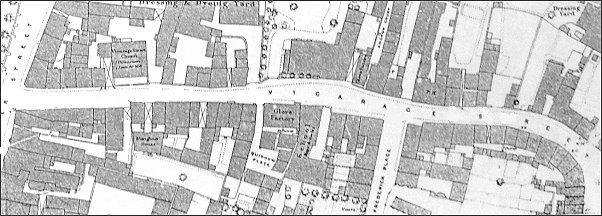
A map based on the 1886 Ordnance Survey of Vicarage Street with Silver Street at extreme left. The Unitarian chapel is on the north side of Vicarage Street at centre left, the only property with what looks like a small front garden.
gallery

This colourised photograph
features in my
book "A-Z
of Yeovil"
An early photograph dating to around 1900, of the western end of Vicarage Street looking towards Silver Street. The Unitarian church, rebuilt in 1809, was in use at this time. This was built on the site of the medieval Chantry of the Blessed Virgin Mary.
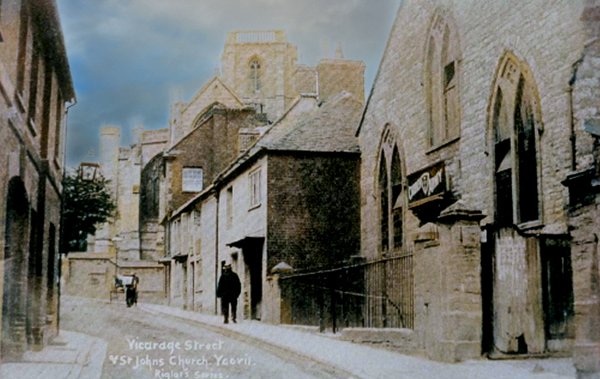
This colourised
postcard
features in my
book 'Yeovil
From Old
Photographs'
A slightly later photograph, probably dating to around 1910, of the same scene.
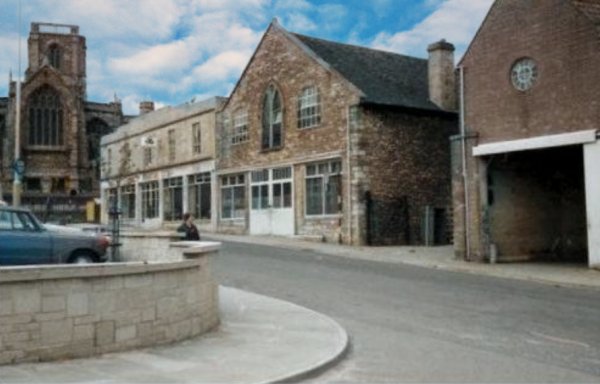
Another photograph of the 1960s looking back to the west end of Vicarage Street with St John's church at extreme left. Note that by this time the old Unitarian church had been acquired by Winsor who adapted it for his use, including changing two of the upper windows and the whole of the ground floor frontage.
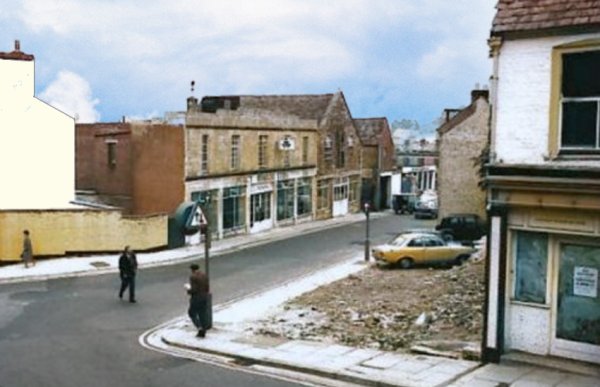
The western end of Vicarage Street viewed from St John's churchyard in the mid-1960s. The 1930s building at centre was Percy Winsor's Engineering and agricultural implements business. Beyond that is the former Unitarian church taken over by Winsor as an extension to his store.
